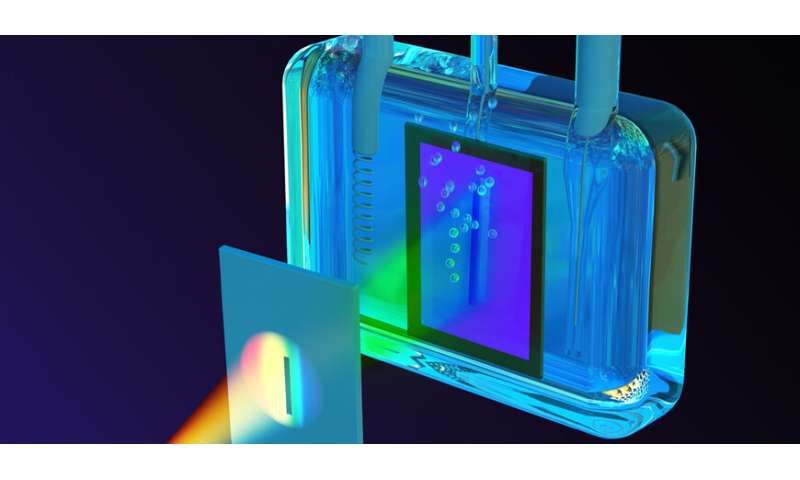
[ad_1]

Every hour, the sun saturates the earth with more energy than humans use in a year. Harnessing some of this energy to meet global demand has become a grand challenge, with the world poised to double its energy consumption in just thirty years.
In a new study, researchers at the Biodesign Center for Applied Structural Discovery (CASD) and ASU’s School of Molecular Sciences take a page from nature’s lesson book. Inspired by the way plants and other photosynthetic organisms collect and use the sun’s radiant energy, they hope to develop technologies that harvest sunlight and store it as carbon-free or carbon-neutral fuels.
“This article describes a general yet useful strategy for better understanding the role of catalysts in emerging technologies for converting sunlight to fuels,” says corresponding author Gary Moore.
The research appears in the current issue of the American Chemical Society (ACS) journal Applied Energy Materials and graces its cover.
Despite the advances in solar panel technologies, their limitations are apparent. Researchers would like to store accumulated energy from the sun in a concentrated form, to be used when and where it is needed. Catalysts—materials that act to speed up the rate at which chemical reactions occur—are a critical ingredient for harvesting sunlight and stockpiling it as fuels, through a process known as photoelectrosynthesis.
As the authors demonstrate, however, the effectiveness of catalysts is critically dependent on how they are used in new green technologies. The goal is to maximize energy efficiency and where possible, make use of earth-abundant elements.
According to Brian Wadsworth, researcher in the CASD center and lead author of the new study, a less-is-more approach to catalysts may improve the performance of photoelectrosynthetic devices:
“There is a traditional notion that relatively high loadings of catalyst are beneficial to maximizing the reaction rates and related performance of catalytic materials,” Wadsworth says. “However, this design strategy should not always be implemented in assemblies involving the capture and conversion of solar energy as relatively thick catalyst layers can hamper performance by screening sunlight from reaching an underlying light-absorbing material and/or disfavoring the accumulation of catalytically-active states.”
The new research provides a framework for better understanding catalytic performance in solar fuel devices and points the way to further discoveries.
Brian L. Wadsworth et al, Addressing the Origin of Photocurrents and Fuel Production Activities in Catalyst-Modified Semiconductor Electrodes, ACS Applied Energy Materials (2020). DOI: 10.1021/acsaem.0c00919
Citation:
Study offers new insights for sun-gathering technologies (2020, August 24)
retrieved 24 August 2020
from https://phys.org/news/2020-08-insights-sun-gathering-technologies.html
This document is subject to copyright. Apart from any fair dealing for the purpose of private study or research, no
part may be reproduced without the written permission. The content is provided for information purposes only.
[ad_2]
Source link